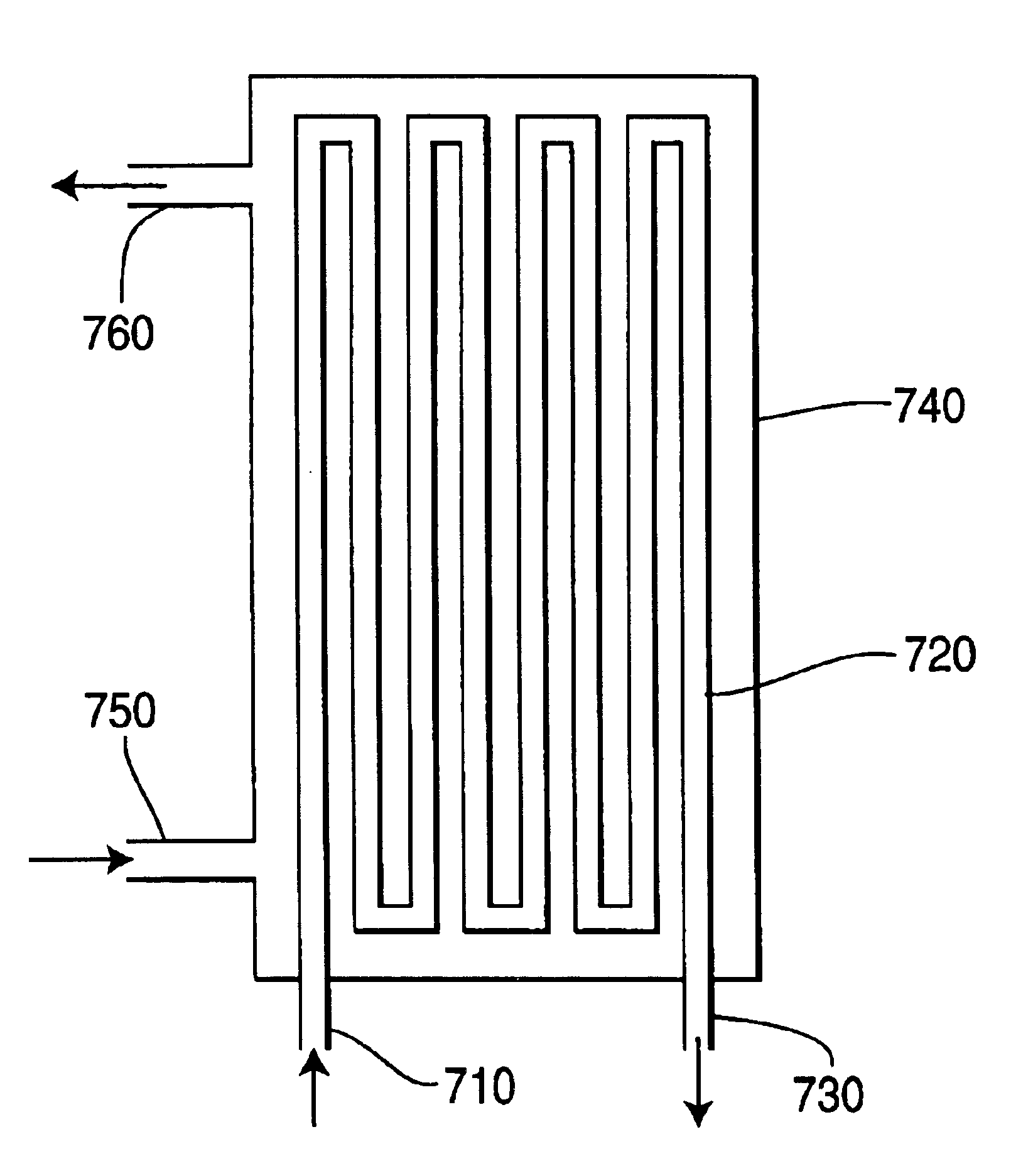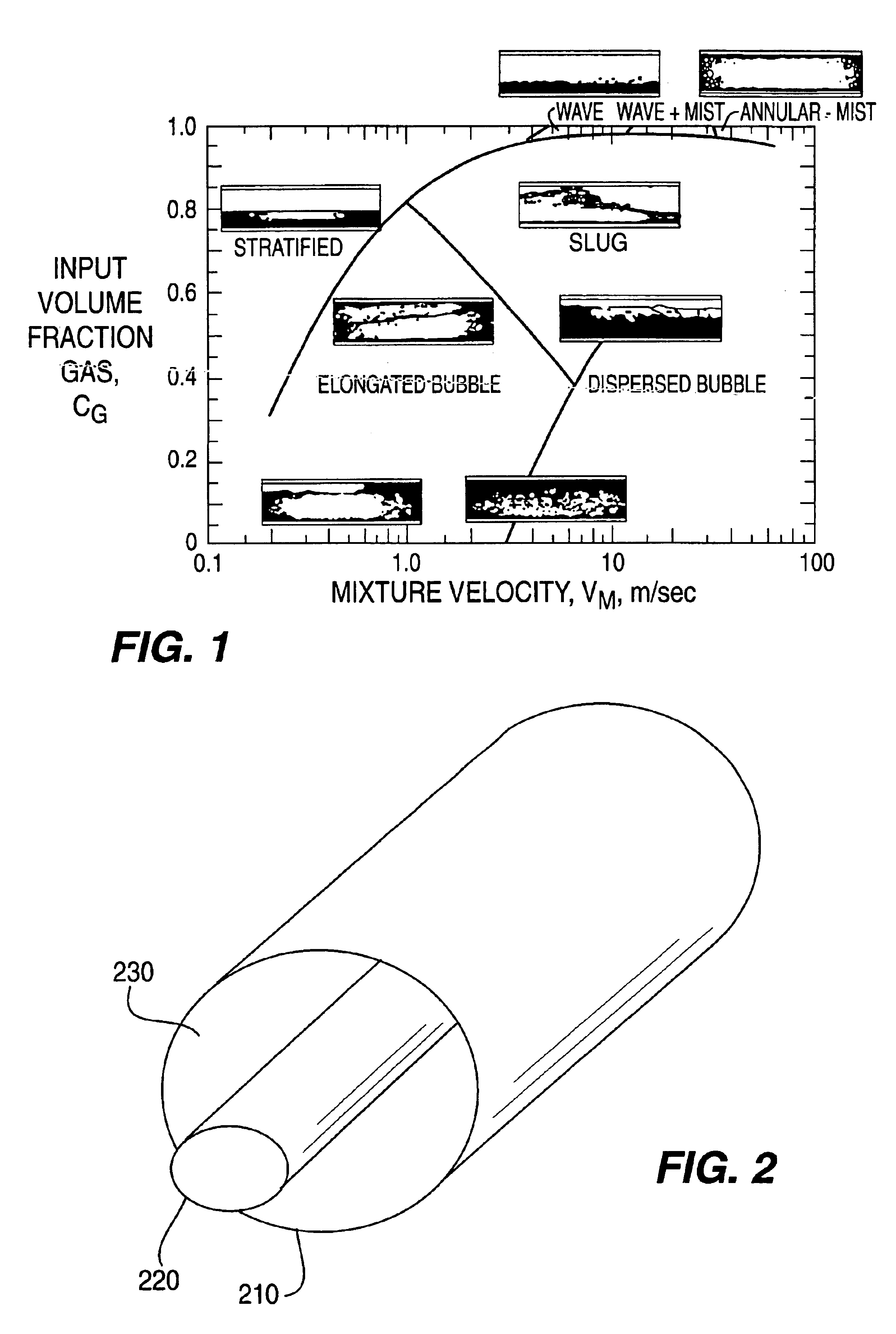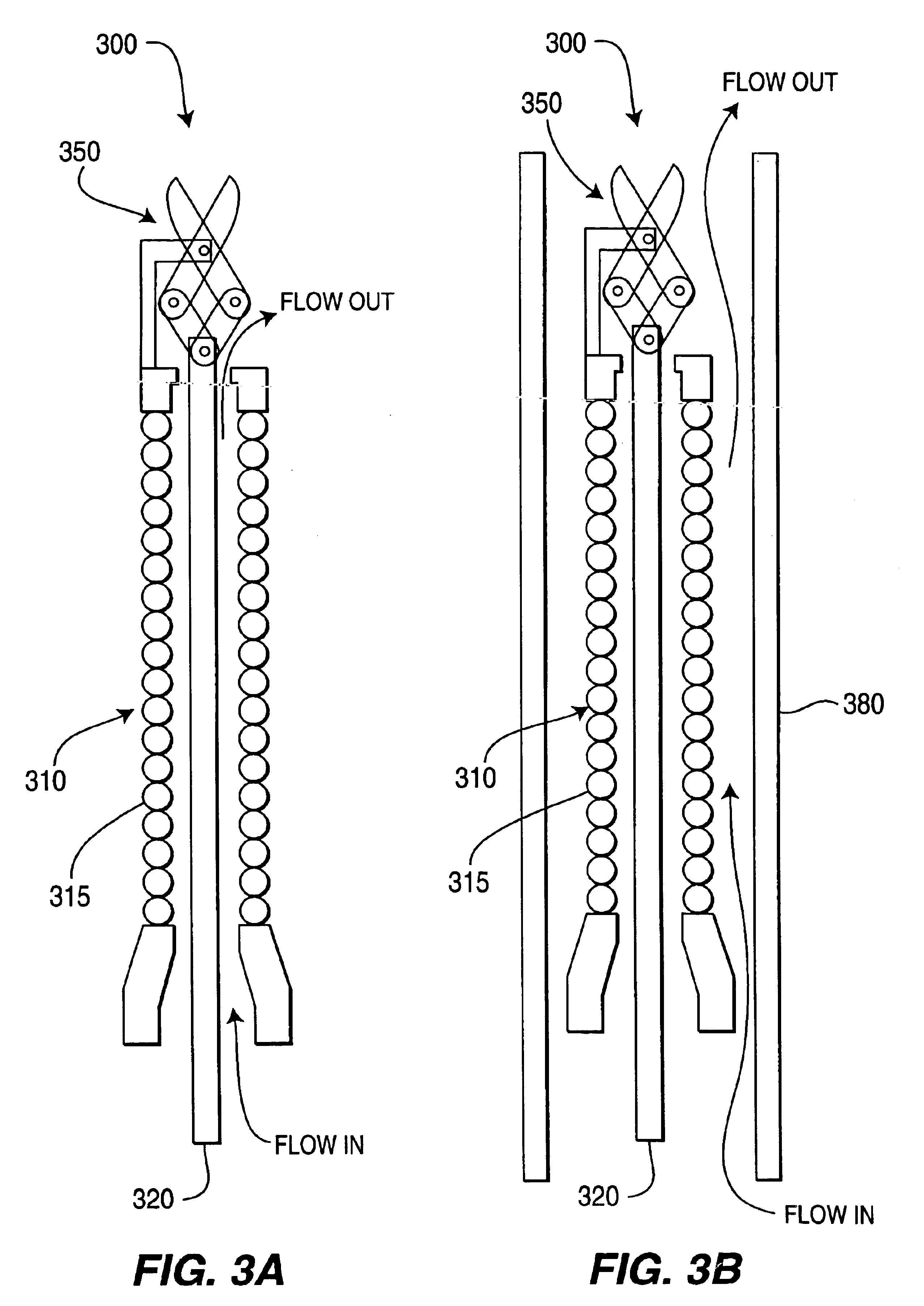Method of cleaning passageways using a mixed phase flow of a gas and a liquid
- Summary
- Abstract
- Description
- Claims
- Application Information
AI Technical Summary
Benefits of technology
Problems solved by technology
Method used
Image
Examples
example 1
This example illustrates cleaning of a dental handpiece having a complex internal geometry. The flow path of fluid through the handpiece is shown generally in FIG. 4, except that the return path is divided into a number of angularly spaced subdivisions. The internal diameter of the tubing varied from {fraction (1 / 32)} to {fraction (1 / 16)} inch. The tubing was thoroughly cleaned between experiments.
The handpiece was inoculated with an initial bacterial load of 4×106 Bacillus steariothermopholia spores (ATCC 7953) distributed among four chosen sites experimentally known to be the worst sites for cleaning.
The handpieces were then subjected to various cleaning techniques as set forth below. Then the cleaned handpieces were placed in sterile growth medium, and incubated for two days. The bacterial growth was then measured.
Part A. Surfactant Only.
The cleaning solution was a surfactant available as CPC-718 from VWR Scientific, which is a mixture of amphoteric and anionic surfactants. The s...
example 2
The method of Example 1 was repeated but cleaning the internal water line channel of the dental handpiece, which was a simple tubular passageway. Similar results were obtained.
example 3
A biopsy device containing a cable inside a polymer-coated sheath, having an outside diameter of 0.084 inch, was used in this example. The access for fluid flow to clean the region between the cable and the sheath was at each end of the sheath where the cable entered or exited from the sheath using existing clearances. Cleaning between the sheath and the cable was tested by connecting the flow source to an existing threaded connection at the operator's end of the biopsy device. The flow then exited at the other end of the biopsy device where the tissue removal blades are located.
For cleaning the exterior of the biopsy device, the entire length of the device was inserted into a clear plastic tube which served as a passageway to direct flow along the outside of the device. The inside diameter of the clear plastic tube was about 50% larger than the outside diameter of the device.
Air was supplied at a pressure of 50 psi, and a gas / liquid flow rate ratio of several hundred to one, using ...
PUM
| Property | Measurement | Unit |
|---|---|---|
| Temperature | aaaaa | aaaaa |
| Pressure | aaaaa | aaaaa |
| Velocity | aaaaa | aaaaa |
Abstract
Description
Claims
Application Information
 Login to View More
Login to View More - R&D
- Intellectual Property
- Life Sciences
- Materials
- Tech Scout
- Unparalleled Data Quality
- Higher Quality Content
- 60% Fewer Hallucinations
Browse by: Latest US Patents, China's latest patents, Technical Efficacy Thesaurus, Application Domain, Technology Topic, Popular Technical Reports.
© 2025 PatSnap. All rights reserved.Legal|Privacy policy|Modern Slavery Act Transparency Statement|Sitemap|About US| Contact US: help@patsnap.com



